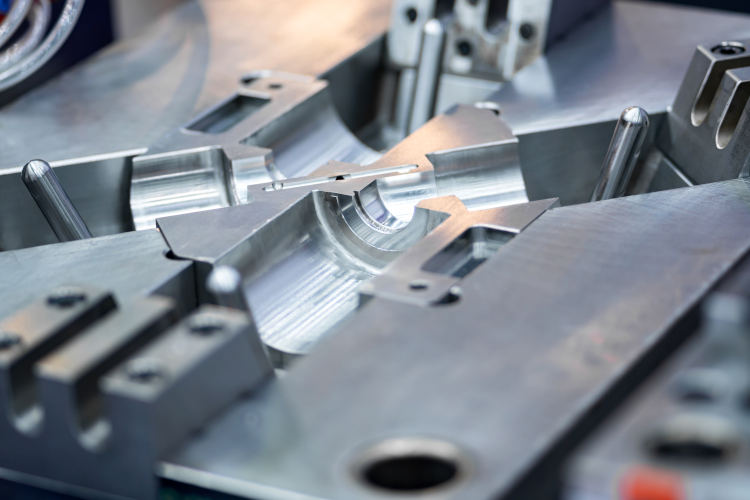- 10-06-2020
- Articles
How does pressure injection moulding works?
Moulds are the invisible main characters of a huge number of consumer goods, particularly in pressure injection of Zamak, Magnesium and Lead parts. Whether creating a small component for a vehicle or a fully finished product, such as a door knob, the mould is a vital part of the value chain: it is not only essential on the manufacturing line, but also acts as a genuine fingerprint by ensuring unique traceability.

Indeed, the mould is a fundamental part in the pressure injection process of Zamak, Magnesium and Lead in a hot chamber. It is not only essential on the manufacturing line, but it also acts as a real fingerprint by ensuring unparalleled traceability. In this way, injection moulding allows to fully control all the steps related to the quality, exigency and tolerance of the finished pieces.
What are the benefits of pressure injection molding?
In addition to the production of a significant volume of high quality Zamak, Magnesium or Lead parts, pressure injection molding has multiple benefits.
To begin with, casting enables overall costs per part to be reduced by cutting the number of subsequent machining operations: a simple casting process is enough to obtain precise and virtually finished parts. This is the great advantage of injection moulding: we can create very detailed parts with complex shapes.
This process involves a high degree of automation, representing significant savings both in cost and production time. In addition, many process steps can be performed by machines or robots controlled by a single operator.
How does pressure injection moulding works?
The process is very simple: thanks to its high fluency, the material (Zamak, Lead or Magnesium) is pushed into the mould using high pressure. The mould cavity is completely filled, and the physical qualities of these alloys allow the metal to be introduced even into the most complicated, intricate and detailed corners of the mould.
Each machine has a melting pot where the base material is introduced as ingots and melted at a temperature of 430 °C. The molten Zamak is then injected into a die using a hydraulically operated cylinder. The surface of the die is at about 100 °C, and its interior is continuously cooled. After casting, parts are automatically or manually separated from the feed channels by rotating drums installed next to the machines.
100% recyclable: finally, this entire process generates very little or no material waste, as the leftover material can be reused.
Gurelan: inhouse moulding manufacture
Another great advantage of moulds for die-casting metal parts is their long service life. Unlike the moulds used in other steel processes, the system used in Zamak´s pressure injection allows millions of manufacturing cycles in multi-cavity. On the other hand, an aluminum mould for example will have a shorter life, thus generating a higher cost that will affect the final price of each injected part..
Gurelan offers complete solutions, from piece design and technical definition to pressure injection, including industrialization, technical feasibility analysis, in-house mould manufacturing... Thanks to our wide experience, we assist throughout the industrialization of a part, from the selection of the material itself to the finished product, meeting all the customer´s criteria at the most competitive price. Using the latest technology, we are able to define and design the most suitable mould for the needs and requirements of each project.